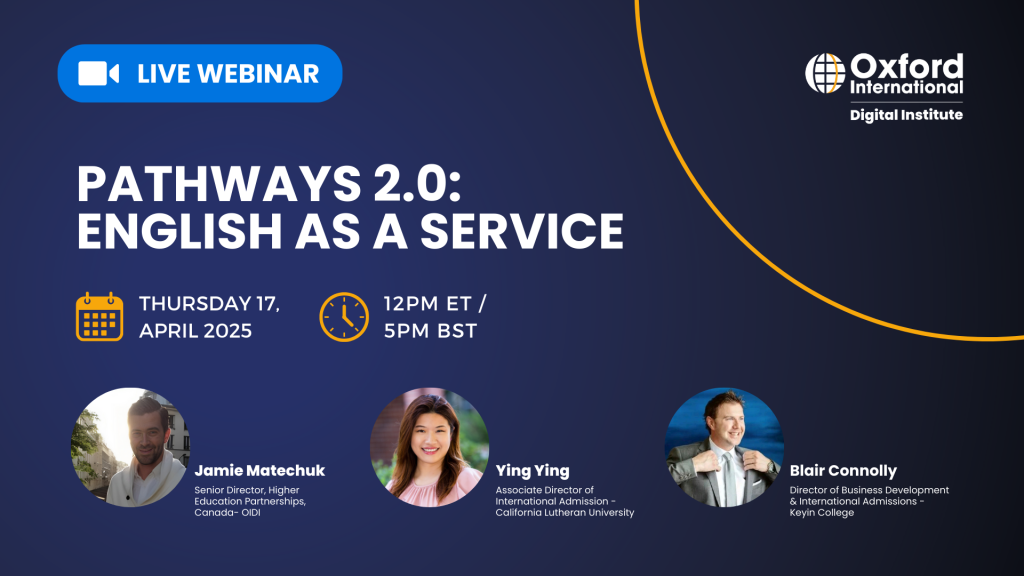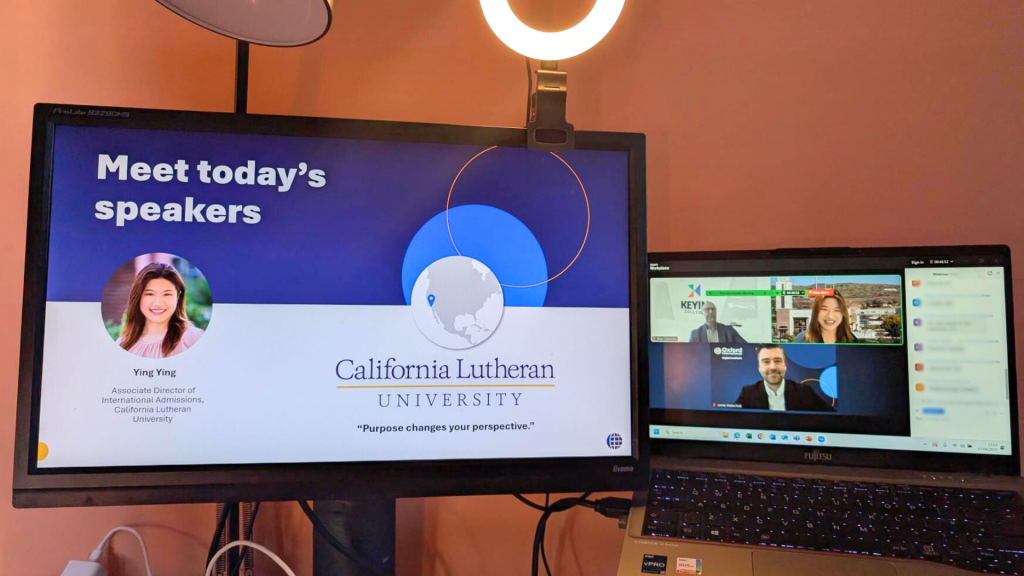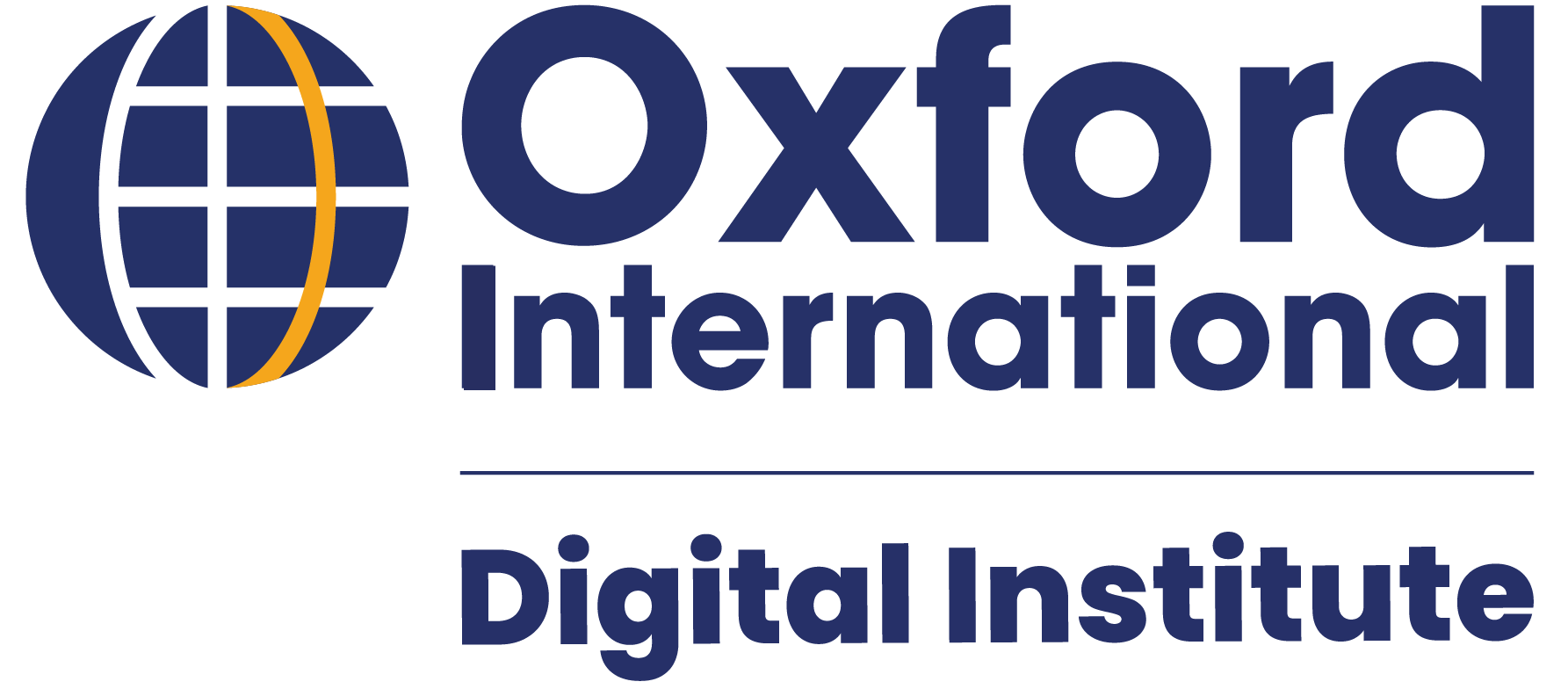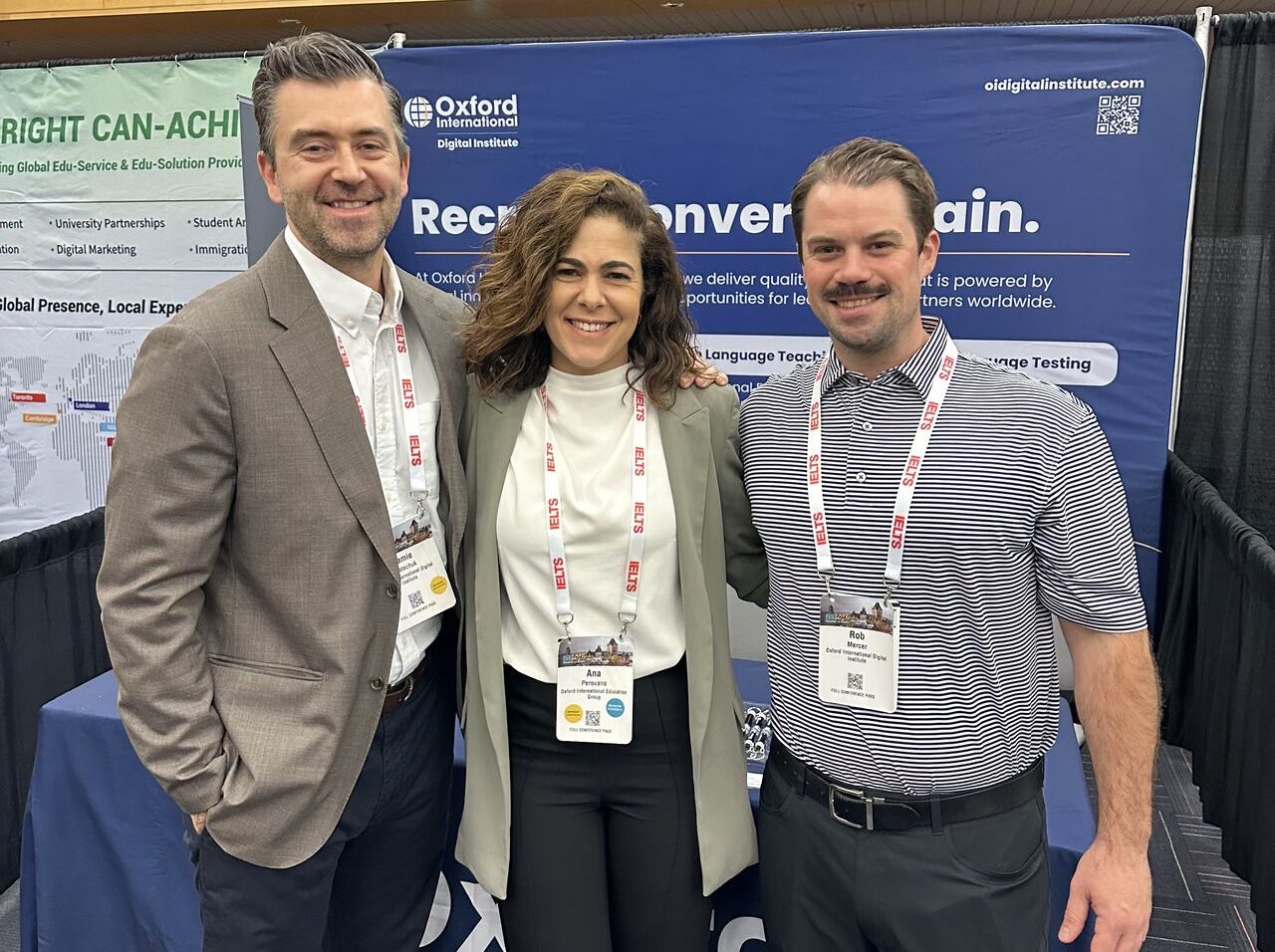How are English pathway programmes evolving with the changing international student landscape? Our recent webinar, Pathways 2.0 – English as a Service, brought together two international admissions professionals – Ying Ying, Associate Director of International Admissions at California Lutheran University and Blair Connolly, Director of International Admissions and Business Development at Canada’s Keyin College – for a fascinating discussion that revealed how institutions are adapting to meet shifting needs. Overseen by Jamie Matechuk, Senior Director of Higher Education Partnerships, Canada for OIDI, this webinar brought up some useful points that other institutions could use to shape their strategies. If you missed the webinar, here are our top five takeaways.

1. International education is in flux – but there’s still opportunity
Both our speakers acknowledged that there have been major shifts in international student mobility, painting a picture of significant fluctuation – from high growth to major downturns. Despite these challenges, institutions that adapt and innovate are still finding ways to grow, and developing alternative pathways has been crucial to adapting to this changing landscape.
2. Student and parent anxiety is high – so support structures are more important than ever
Ying talked about the increasing anxiety she’s noticed among international students and their families, particularly with regard to visa, security and future opportunities, with parents sending her private messages to ask what her institution will do to support them. “International students don’t want to wake up the next morning and find out they have to leave the country immediately,” she explained. Those on the verge of graduating are concerned about the job market, or whether or not they’ll secure funding for postgraduate study.
With this anxiety now a core part of the international student landscape, Ying’s institution has responded by strengthening communication and offering more reassurance to help alleviate concerns. They’re making efforts across departments to respond consistently and effectively to anxious students, providing them with opportunities to talk with professional therapists and giving them a safe space to share their worries.

3. Pathways are evolving from physical to flexible
The impacts of the COVID-19 pandemic are still being felt, combining with shifts in policy to make traditional on-campus language pathways – known as Pathways 1.0 – increasingly unviable. For Ying, the answer lies in a digital-first model, an approach that’s becoming the new standard as institutions pivot to working with customisable online language placement and support like that offered by OIDI.
Blair, too, shared how his institution has leaned into technology to make this happen, delivering some of their pathways online and some on campus in Newfoundland. Central to making this work is their student portal app, which allows students to connect with the college while completing the remote part of their study in their home countries, building one-to-one relationships before arriving on campus. “When they arrive, they feel like they’ve already been there, and I think that’s critical,” Blair noted. “We’ve seen that the evidence kind of plays out that they’re happier, they feel welcome, they feel validated in their decision and comfortable when they arrive.”
4. It’s important for institutions to think outside the box
With federal caps on international student numbers in place in some countries, including Canada, finding ways to grow has required some original thinking on the part of admissions teams. Blair shared how, despite partnerships with public institutions, Keyin College faced high study permit refusals – as much as 70 or 80%.
Realising that they’d need a different approach, they pivoted to work permit pathways, such as provincial nomination programs (PNPs), which allowed their students to arrive under employment-focused immigration streams. This approach enabled them to grow even with the new federal caps in place, at the same time as connecting the college with industry and providing a conduit between international students and industry needs. “We found ways that still work within the system,” Blair concluded.
5. Tailored, industry-aligned learning is driving growth
Keyin’s strategy of aligning learning with the needs of the current labour market ties in with another important point about Pathways 2.0: the need to tailor course content to specific market sectors and audiences. Whether it’s healthcare, tech or energy, Keyin’s focus on micro-credentials and federal training contracts shows a path forward that’s less dependent on traditional study permits.
Blair also notes the importance of wraparound supports – from immigration help to ESL and wellness – in making their model attractive as well as scalable. This extends to making sure their language pathway programmes support students in getting to grips with cultural nuances and dialects, of which there are many in his part of Canada. This is particularly important for preparing students for the potentially life and death situations they could find themselves in once working in the healthcare system. “We work with them all the way through their theory training on their language proficiency, including cultural nuance, so that when they get here, it doesn’t come as a shock to them that the English is quite different here.”

Customised English support
Picking up on this theme, OIDI’s Jamie Matechuk highlighted the nuanced, customised English support we’re giving to institutions facing political challenges or cutbacks to those wraparound supports we mentioned just now. He pointed out the shift towards ‘pathways as a service’, an on-demand approach that aligns with modern expectations surrounding online technologies, such as app downloads, and with post-Covid expectations around flexibility.
This approach is a response to the fact that, as Jamie put it, “there’s no one-size-fits-all language service anymore”, with OIDI providing highly customised English programs that meets the needs of both institutions and international students – online and in their home countries. “It’s how can we make it the best programme possible for that institution and for those students,” he concluded.
Catch up with the webinar here.









